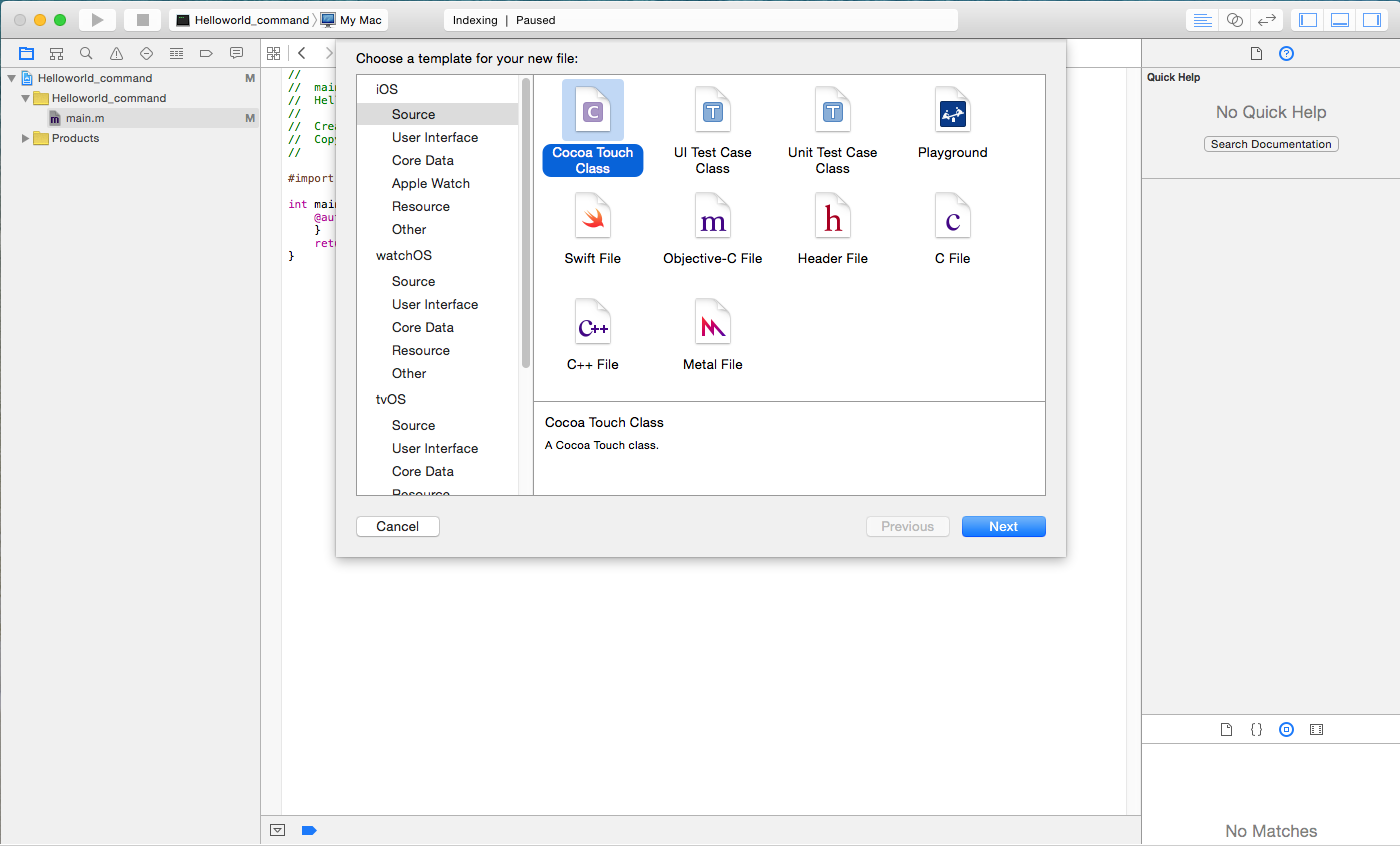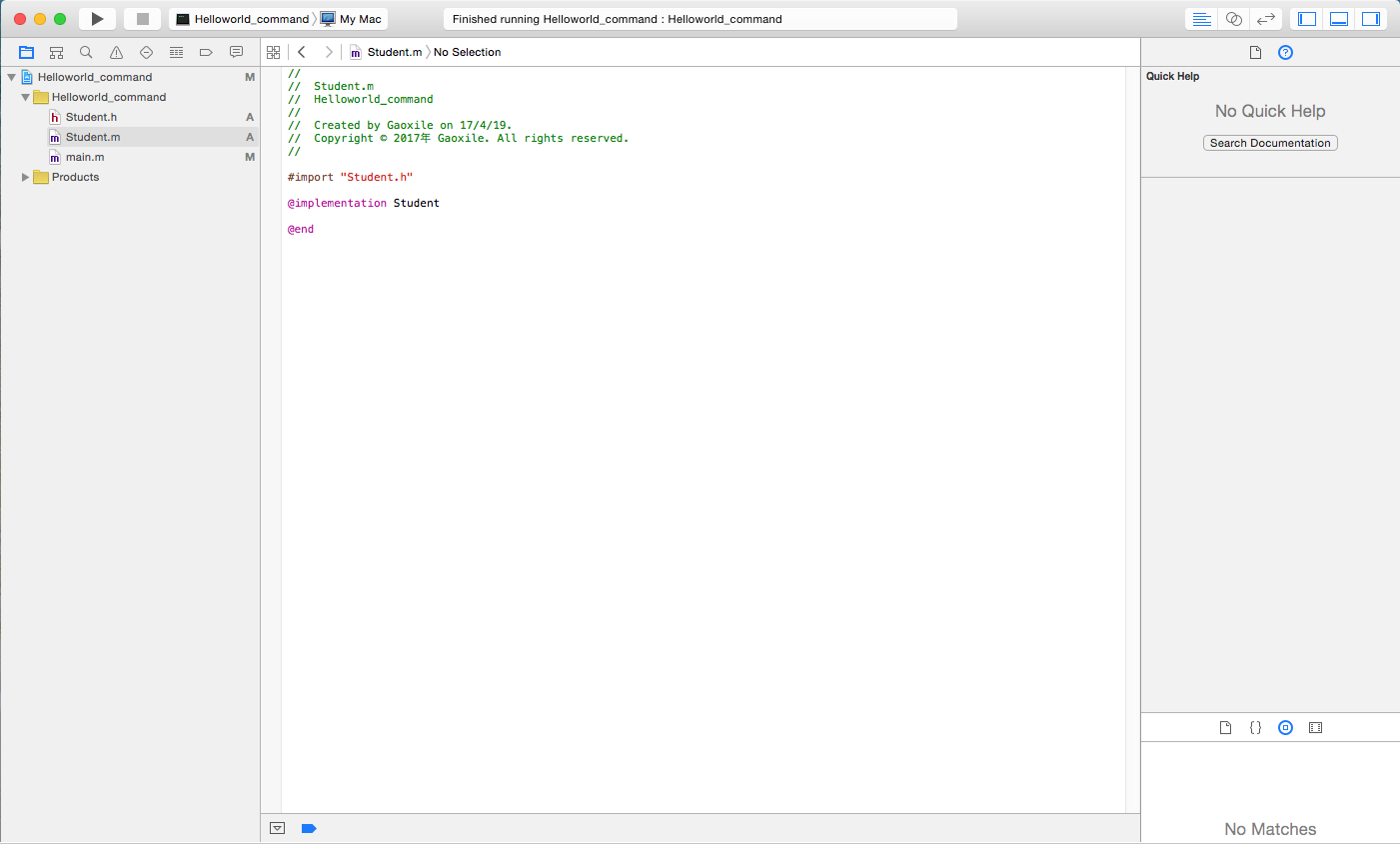[experimental environment]
Playing IOS on virtual machines really makes people want to raise their desks (')( Pro-test VMWare12, MACOS 10.10.5, Xcode 7.2 can be compatible with each other, the highest supported IOS version is 9.2, with download address, installation tutorial can Baidu itself.
VMWare WorkStations 12: Link: http://pan.baidu.com/s/1dETuoMH password: mcxb
MACOS 10.10: Link: http://pan.baidu.com/s/1nvJQJI5 password: c3l3 ps: Upgradable to 10.10.5 according to Baidu Tutorial
[Analyzing Objective-C Class]
On the basis of Xcode's default command line project, a new file named Student is created, which can be used to input a student's name, language achievement, mathematics achievement and English achievement.

After the creation is completed, two files, Student.h and Student.m, are automatically added to the Xcode project, which are similar to the header and class files of C++. At this time, the engineering structure of Xcode is shown in the following figure.

Among them, the. h file is used to declare the variables and methods of the class. The. m file first refers to the. h file and implements the method of its declaration.
Student.h
#import <Foundation/Foundation.h>
@interface Student : NSObject{
NSString* _name;
int _chinese;
int _math;
int _english;
}
-(void)setName:(NSString*) name;
-(void)setChinese:(int)chinese;
-(void)setMath:(int)math;
-(void)setEnglish:(int)english;
-(NSString*)name;
-(int)chinese;
-(int)math;
-(int)english;
@end#import "Student.h"
@implementation Student
-(void)setName:(NSString*) name{
_name = name;
}
-(void)setChinese:(int)chinese{
_chinese = chinese;
}
-(void)setMath:(int)math{
_math = math;
}
-(void)setEnglish:(int)english{
_english = english;
}
-(NSString*)name{
return _name;
}
-(int)chinese{
return _chinese;
}
-(int)math{
return _math;
}
-(int)english{
return _english;
}
@end
#import <Foundation/Foundation.h>
#import "Student.h"
int main(int argc, const char * argv[]) {
@autoreleasepool {
Student* student = [[Student alloc] init];
[student setName:@"youzi"];
[student setChinese:103];
[student setMath:115];
[student setEnglish:108];
NSLog(@"%@ -- %d %d %d",[student name],[student chinese],[student math],[student english]);
}
return 0;
}
[Analytic Objective-C Function]
1. Single-parameter function
As shown above, functions
In'-', the function is an object function, the caller is an object of the class,'+'is a class function,'setName' is a function name,'NSString'is a string type of OC, and'name' is a parameter name.-(void)setName:(NSString*) name
2. Multi-parameter function
In the example above, the four member variables of the Student class are set by four functions, which can also be merged into one function.
The invocation method is:-(void)setName:(NSString*)name Chinese:(int)chinese Math:(int)math English:(int)english
[student setName:@"youzi" Chinese:103 Math:115 English:108]